Communities of Overseas Koreans
- Main page
- Information Center
- Understanding Overseas Koreans
- Communities of Overseas Koreans
Information Center
Y,
Y,
,
false,
,
-
Notice
Y,
Y,
,
false,
,
-
Government News
Y,
Y,
,
false,
,
-
Understanding Overseas Koreans
Y,
Y,
,
false,
,
-
Related Website
Learn the historical background to overseas Korean communities.
-
I. Joseon Dynasty / Korean Empire
Mid 19th century–1910
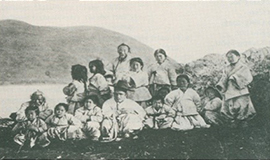 < Emigration to Jiandao and Primorsky Krai >
< Emigration to Jiandao and Primorsky Krai >
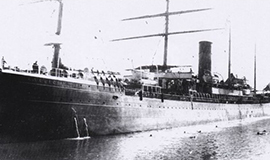 < First emigration to Hawaii - 102 people moving to Hawaii
on RMS Gaelic in 1903 >
< First emigration to Hawaii - 102 people moving to Hawaii
on RMS Gaelic in 1903 >
- Relocation as a way out of poverty
- ▶ Crossed the border and moved to Jiandao and Primorsky Krai due
to the lean years in the 1860s
- Qing and Primorsky Krai handed over to Russia based on the
Convention of Peking in 1860
- First recorded overseas emigration of Korean people in May 1984
(the right to settlement given to 65 Korean people (14
households) by the Russian authorities of Primorsky Krai)
- ▶ Immigration to Hawaii during the Korean Empire period in
1903
- Appr. 7,000 Korean people moved by 1905
- Picture bridge marriage (1910–1924)
- Appr. 2,000 Korean people moved to the American West
- ▶ 1,000 Korean people moved to the henequen plantations, Mexico
in 1905
- Appr. 300 Korea people moved to Cuba
-
II. Japanese colonial period
1910–1945
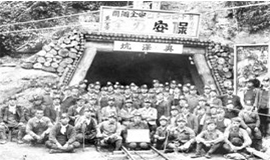 < Korean people conscripted and forced to work in a coal
mine >
< Korean people conscripted and forced to work in a coal
mine >
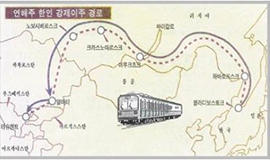 < Forced relocation route of Korean people: 6,000km
>
< Forced relocation route of Korean people: 6,000km
>
- Forced relocation for exploitation and conscription during
the Japanese colonial era
- ▶ Forced relocation by Japan
- Relocation to Japan as part of colonial policies after the loss
of sovereignty in 1910
- Workers conscripted to Manchuria, Sakhalin, Japan, etc. in 1939
- ▶ Forced relocation by Stalin (appr. 6,000 km)
- Appr. 180,000 Korean people moved from Primorsky Krai to Central
Asia in 1937
- Korean race’s suffering including prohibited use of the Korean
language
-
III. Post-Liberation of Korea
1945–1962
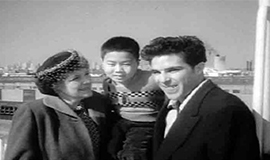
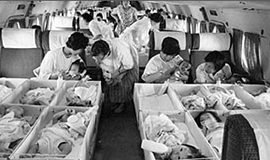
- < Korean orphans adopted abroad >
- Special types of relocation in the middle of social chaos
such as the Korean War
- ▶ After the liberation of Korea
- Stowaways in severe social chaos (Japan)
- ▶ After the Korean War
- Special types of relocation such as international marriage, war
orphans, and international adoptions
- ▶ Korean people who failed to return to Korea due to various
circumstances
-
IV. Post-Emigration Act
1962–present
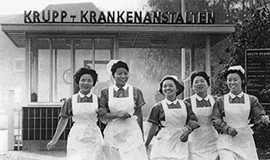 < Nurses dispatched to Germany >
< Nurses dispatched to Germany >
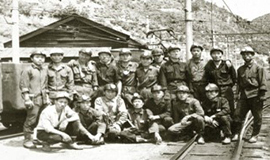 < Miners dispatched to Germany >
< Miners dispatched to Germany >
- Various types of relocation after the enactment of the Emigration Act
- ▶ After the enactment of the Emigration Act in 1962
- Immigrants such as miners and nurses dispatched to Germany,
agricultural immigration to South America, and people dispatched
to Vietnam
- Immigrants’ children and grandchildren born in a foreign country
with the country’s nationality
- ▶ After the collapse of the former Soviet Union in 1991
- The Communist block began to embrace Korean people’s communities
(relocation to Primorsky Krai, distributed relocation in the
CIS, return to Korea)
- ▶ Various types of immigrants such as international students and
overseas employment
 < Emigration to Jiandao and Primorsky Krai >
< Emigration to Jiandao and Primorsky Krai >
 < First emigration to Hawaii - 102 people moving to Hawaii
on RMS Gaelic in 1903 >
< First emigration to Hawaii - 102 people moving to Hawaii
on RMS Gaelic in 1903 >
 < Korean people conscripted and forced to work in a coal
mine >
< Korean people conscripted and forced to work in a coal
mine >
 < Forced relocation route of Korean people: 6,000km
>
< Forced relocation route of Korean people: 6,000km
>


 < Nurses dispatched to Germany >
< Nurses dispatched to Germany >
 < Miners dispatched to Germany >
< Miners dispatched to Germany >